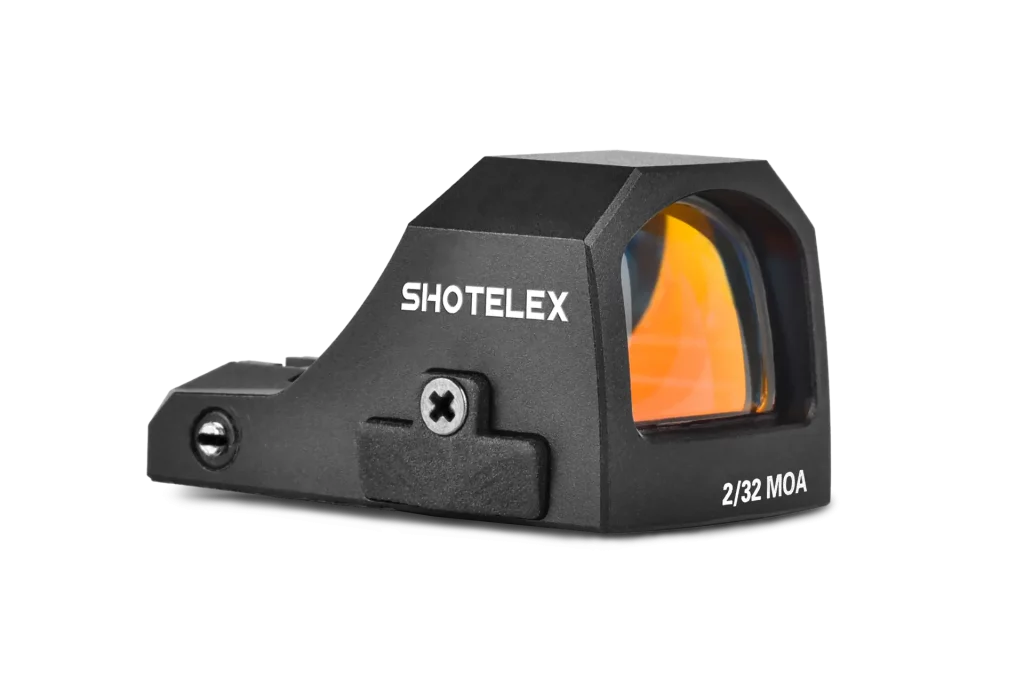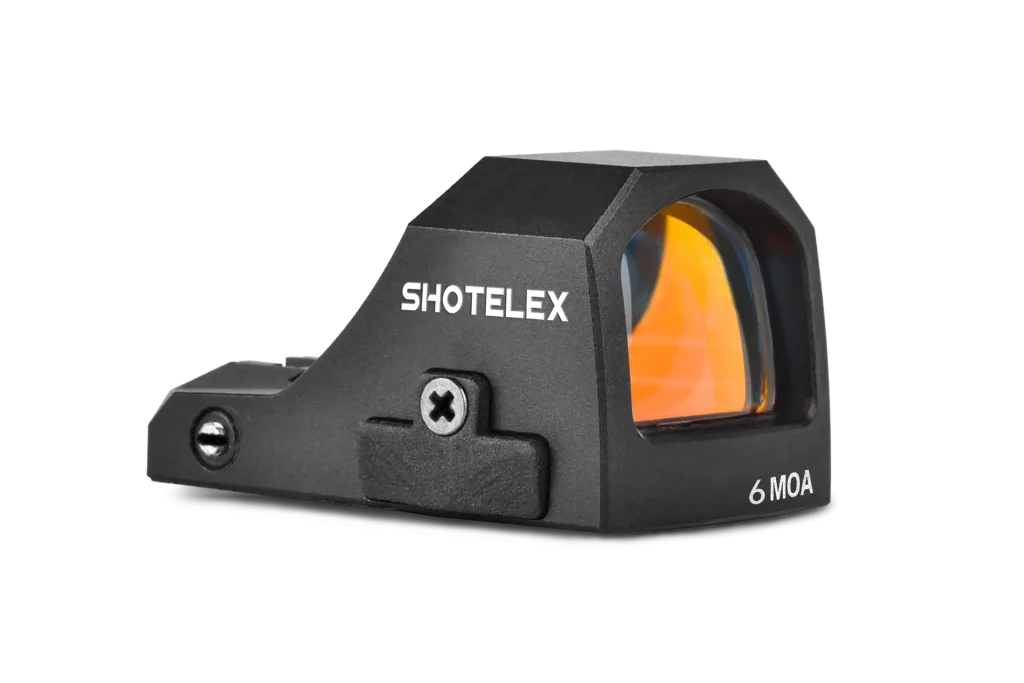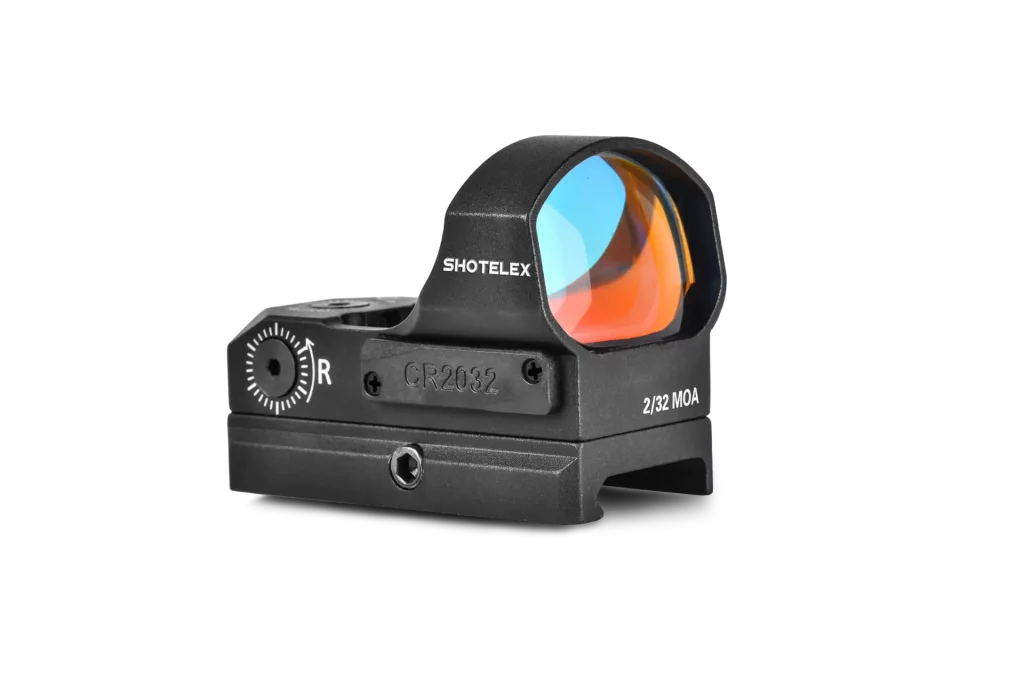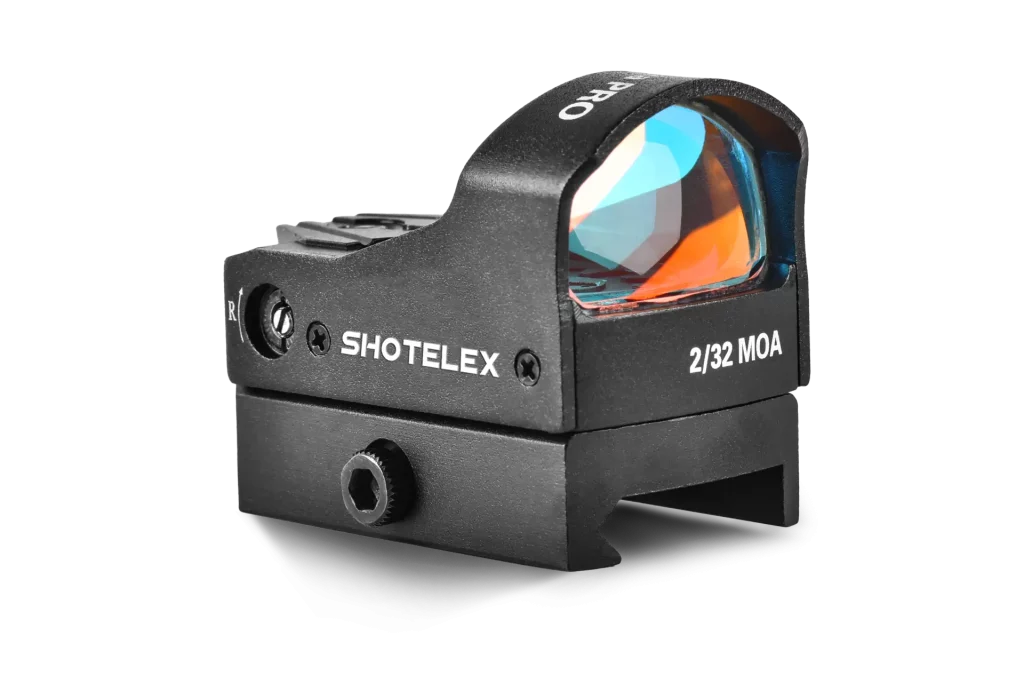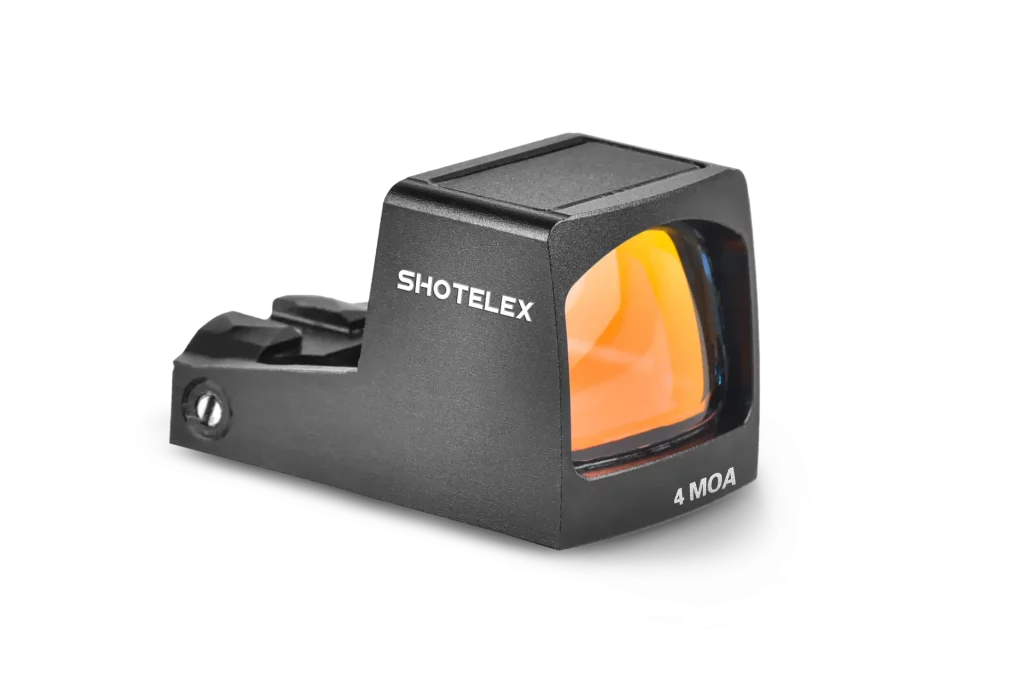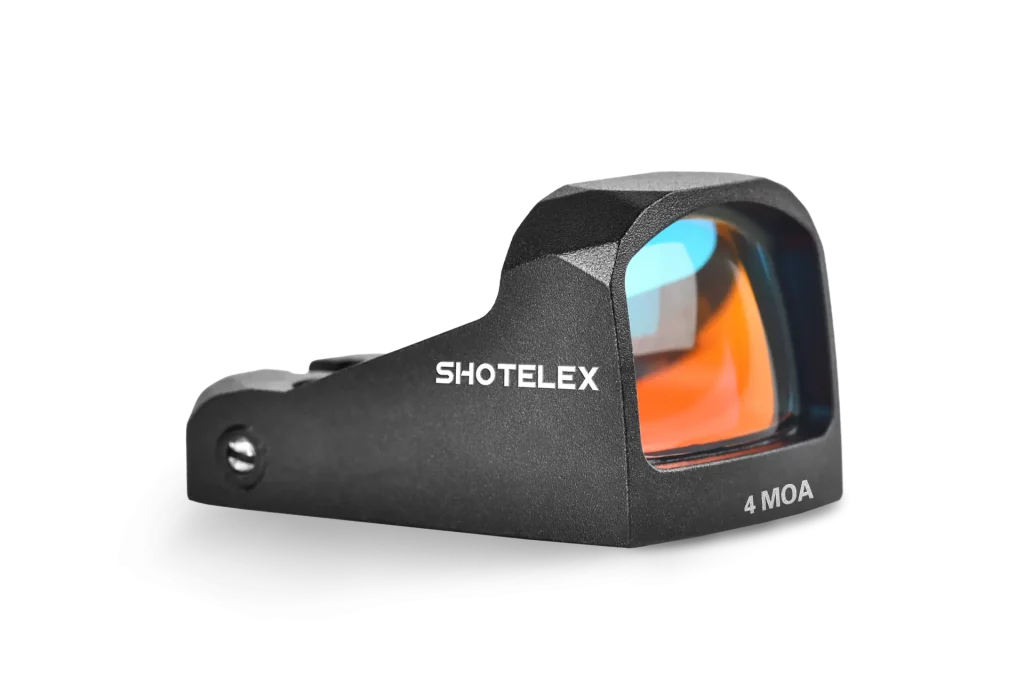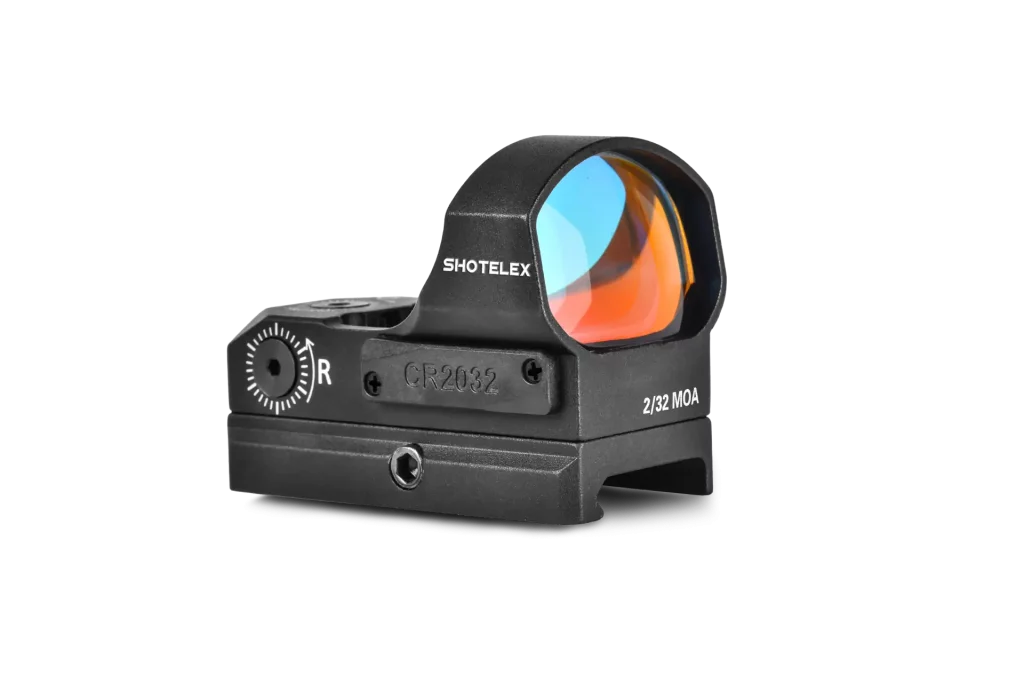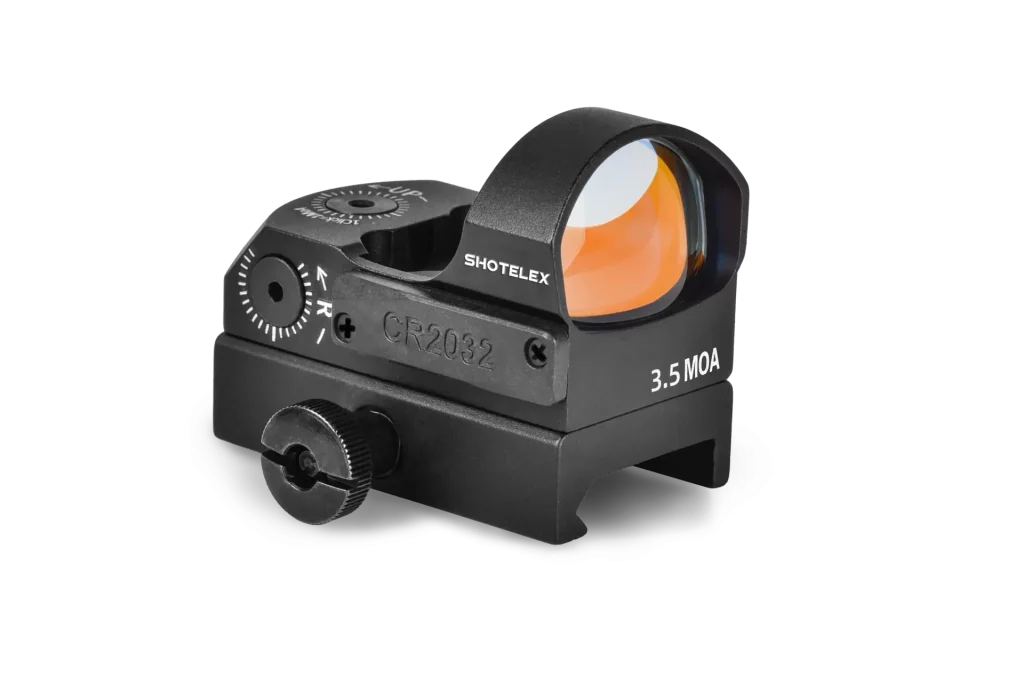Red Dot vs Iron Sight: Which One Should You Choose?
In shooting sports, there are two common types of sights: Red Dot Sights and Iron Sights. Each system has its own unique advantages and is suitable for different scenarios. So, what distinguishes them, and which one is more suitable for you? This article will provide a detailed comparison of red dot vs iron sight, allowing you to make a suitable decision.
Part 1. What is a Red Dot Sight?
Red dot sight is an electronic sighting system that uses the principle of reflection to create a red dot as a targeting marker. The sight projects a bright red light spot onto the lens through electronic components, allowing the user to align the red dot with the target for quick and accurate shooting.
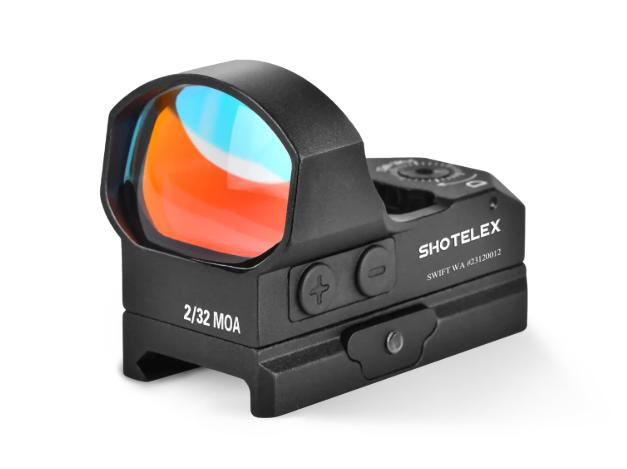
Features of Red Dot Sights:
- Fast Target Acquisition: Red dot sight provides a more intuitive aiming experience, helping shooters quickly lock onto a target, making it especially suitable for dynamic shooting.
- High Accuracy: Since the red dot can be continuously aligned with the target, shooters do not need to realign their sight or other markers, improving shooting accuracy.
- Performance in Low Light Conditions: Red dot sights perform well in low-light environments. Unlike iron sights, which rely on lighting conditions, the red dot remains clearly visible.
- Wide Range of Applications: Red dot sights are widely used in sports shooting, tactical shooting, and hunting, particularly for fast target tracking.
Part 2. What is an Iron Sight?
Iron sight is a traditional mechanical sighting system, typically consisting of a front sight and a rear sight. The shooter aligns the front and rear sights to determine the position of the target. This sighting method does not rely on any electronic devices, making it simple in design and highly durable.
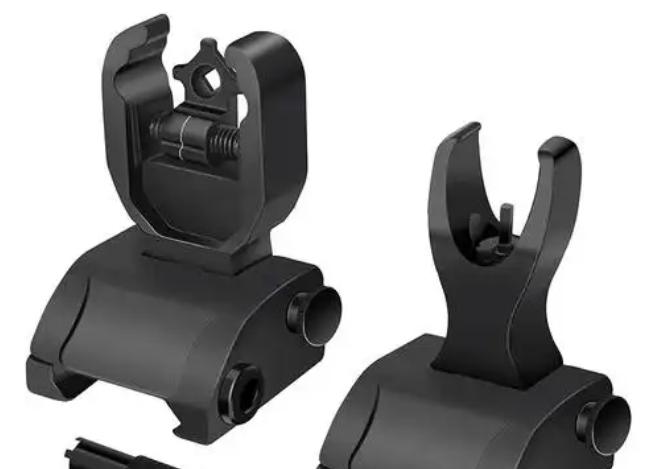
Features of Iron Sights:
No Batteries Required: Iron sights do not require batteries, making them very reliable, especially in environments where battery issues may arise.
High Durability: The structure of iron sights is extremely sturdy and is rarely affected by external factors, allowing them to be used in extreme environments.
Simple Operation: The iron sight system does not require complex setups or adjustments, making it ideal for beginners and traditional shooting enthusiasts.
Part 3. Difference Between Red Dot vs Iron Sight
In this section, we will provide a detailed comparison of red dot sight and iron sight from multiple aspects to help you gain a clearer understanding of these two aiming systems.
1. Design and Construction
Red Dot Sight:
Red dot sight is an electronic aiming system that uses optical lenses to project a bright red dot or other colored mark onto the target, helping the shooter quickly locate the target. Its design is typically compact and powered by an internal battery.
The brightness of the red dot is usually adjustable, allowing the shooter to change its intensity based on lighting conditions, ensuring the red dot is visible even in bright or low-light environments.
Additionally, many high-end red dot sights feature waterproof, shockproof, and other capabilities, adapting to different environments and usage needs.
Iron Sight:
Iron sights are the most basic and traditional aiming system, typically consisting of two parts: a front sight, a small ring or post, and a rear sight, a ring-shaped aperture or U-shaped notch.
Iron sights have a simple structure with no electronic components and work entirely based on mechanical and optical principles. Their advantages are simplicity and durability, requiring almost no maintenance.
However, compared to Red Dot sights, their precision and quick targeting capabilities are limited, especially in dynamic shooting situations.
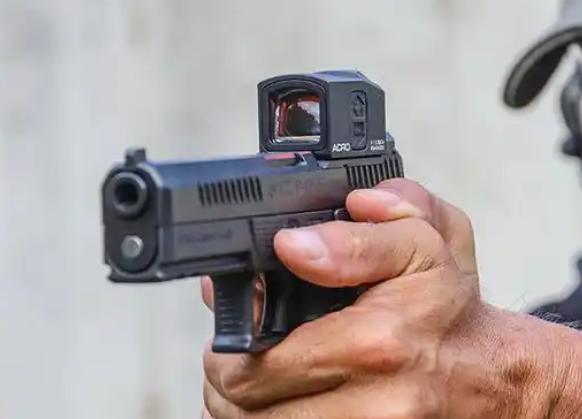
2. Aiming Precision
Red Dot Sight:
Because red dot sight’s work principle is using the red dot or other colored aiming mark projected directly onto the target, a red dot sight offers extremely high precision, especially in fast shooting or situations requiring quick reactions.
The shooter simply aligns the red dot with the target without the need for complex focusing, allowing for faster and more accurate aiming.
Moreover, the size and brightness of the red dot can be adjusted, making it highly adaptable to various shooting environments and ranges.
Iron Sight:
In contrast, the precision of Iron sights is lower as they rely on the shooter’s vision and hand-eye coordination, especially in long-distance shooting, where achieving the same level of precision as a red dot sight is challenging.
The shooter must align the front and rear sights to determine the aiming point, which requires a higher level of shooting skill and accuracy.
In low-light conditions, using Iron sights becomes more difficult, requiring more experience and skill to maintain consistent aiming.
3. User Experience
Red Dot Sight:
The user experience with a red dot sight is generally superior, especially in dynamic shooting and low-light environments. The shooter can quickly and accurately align the target using the red dot, and adjustments can be made without leaving the aiming point.
Red dot sights offer a wider field of view, allowing the shooter to move their eyes quickly while maintaining focus on the target, making them particularly effective in tactical shooting situations.
Iron Sight:
The user experience with Iron sights is relatively basic, requiring the shooter to have strong skills and experience. In fast shooting situations, Iron sights are slower and less flexible compared to red dot sights.
In low-light conditions, the performance of iron sights is especially limited, as there is no electronic compensation, making it harder to clearly see the front and rear sights. Additionally, the field of view with Iron sights is narrower, requiring more precision and concentration from the shooter.
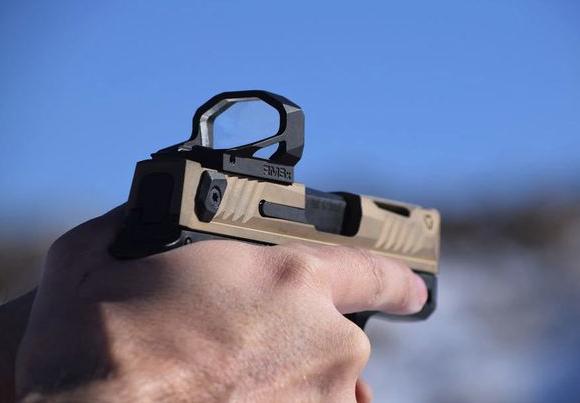
4. Durability and Maintenance
Red Dot Sight:
While red dot sights provide high precision and quick aiming experiences, their electronic components make them less durable, as they are more susceptible to humidity, vibration, or extreme environmental conditions.
Battery life is also an issue, especially during prolonged use, as battery depletion can affect functionality. Therefore, red dot sights need regular inspection and maintenance to ensure stability when needed most.
Iron Sight:
Main advantage of iron sights is their exceptional durability. Because they do not rely on any electronic components, they can withstand extreme environmental changes, including humidity, vibration, and extreme temperatures.
Iron sights require almost no maintenance, and due to their simple structure, the likelihood of damage is very low. Even in harsh environments, iron sights remain reliable and stable.
5. Installation and Adjustment
Red Dot Sight:
Installing a red dot sight is relatively simple, typically allowing for quick mounting on the top or side of a firearm. Many red dot sights come with quick-release features that make installation and removal more convenient. The brightness and size of the dot can also be adjusted as needed, allowing the shooter to fine-tune the sight to the specific shooting environment for optimal performance.
Iron Sight:
Installing iron sights is usually more complex, particularly when fine-tuning precision. The alignment of the front and rear sights requires some skill and experience.
Adjusting Iron sights is more time-consuming, as it involves rotating adjustment screws to fine-tune the position of the sights. For beginners, adjusting the precision and positioning of Iron sights may take some time to get used to.
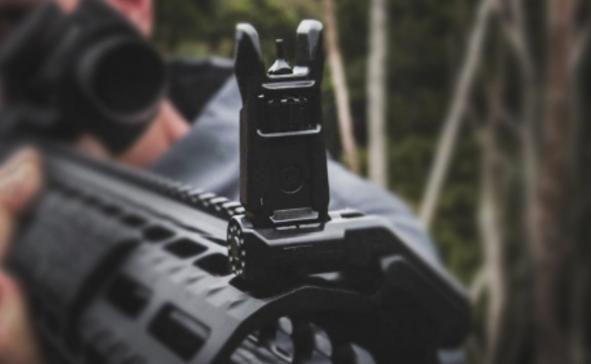
6. Suitable Scenarios
Red Dot Sight:
Red dot sights are ideal for close to mid-range rapid shooting, especially in tactical shooting, competitive shooting, and law enforcement or military contexts.
They offer greater shooting efficiency and precision, and in emergency situations, they allow the shooter to quickly lock onto a target, enhancing reaction speed. As such, red dot sights are widely used in modern firearms.
Iron Sight:
Iron sights are better suited for traditional and long-range shooting, especially when high precision is required.
While Iron sights do not perform as well as red dot sights in fast shooting, they offer a more stable and interference-free aiming experience for high-precision tasks such as sniping.
Although less efficient in quick shots, Iron sights excel in delivering stable and reliable performance in tasks requiring precise long-range shooting.
Summary Table of Red Dot Sight vs Iron Sight
| Comparison Item | Red Dot Sight | Iron Sight |
| Design & Construction | Compact electronic sight, uses optical lens to project a red dot, battery-powered, brightness adjustable | Traditional mechanical sight, consists of front and rear components, works purely on optical and mechanical principles |
| Aiming Accuracy | High accuracy, fast aiming, suitable for dynamic shooting | Lower accuracy, relies on the shooter’s vision and hand-eye coordination, especially less precise at long ranges |
| User Experience | Ideal for fast, dynamic shooting, wide field of view, adapts to different shooting conditions | Basic to use, requires higher skill, performs poorly in low light conditions |
| Durability & Maintenance | Electronic components are sensitive to moisture and vibration, requires regular maintenance | Extremely durable, no electronic components, can withstand extreme environments |
| Installation & Adjustment | Easy installation, adjustable brightness and size to suit different shooting environments | More complicated installation, adjustment requires skill and experience |
| Suitable Scenarios | Best for close to mid-range fast shooting, especially in tactical shooting and emergencies | Suitable for traditional and long-range shooting, especially where high precision is required |
Red Dot Sights vs Iron Sights: Which One is Right for You?
We have previously compared red dot sights to iron sights. In general, choosing between a red dot sight and an iron sight largely depends on your shooting needs and the environment. If you primarily engage in static shooting with close targets and sufficient lighting, Iron sights may be sufficient. They are simple, durable, and budget-friendly.
However, if you need high accuracy in dynamic shooting, fast aiming, or low-light conditions, a red dot sight would be the better choice. Red dot sights enhance aiming speed and precision, making them ideal for situations that require quick responses, such as competitive shooting, hunting, or tactical shooting.
In Summary
Through this article, we aim to help you fully understand the differences between red dot and iron sights, so you can make the best choice for your needs. If you’re looking for a high-quality red dot sight, Shotelex offers the perfect solution to enhance your accuracy and speed. Try Shotelex red dot sights now to get the ideal sight for you and experience outstanding performance!

